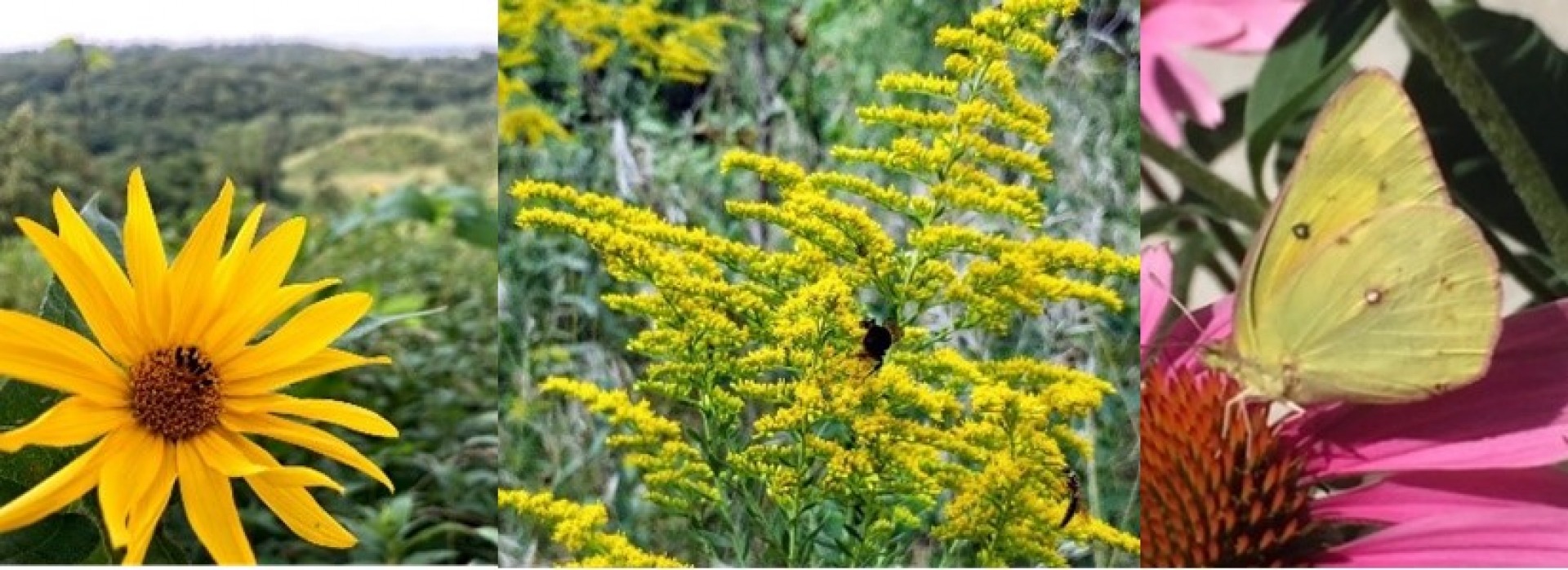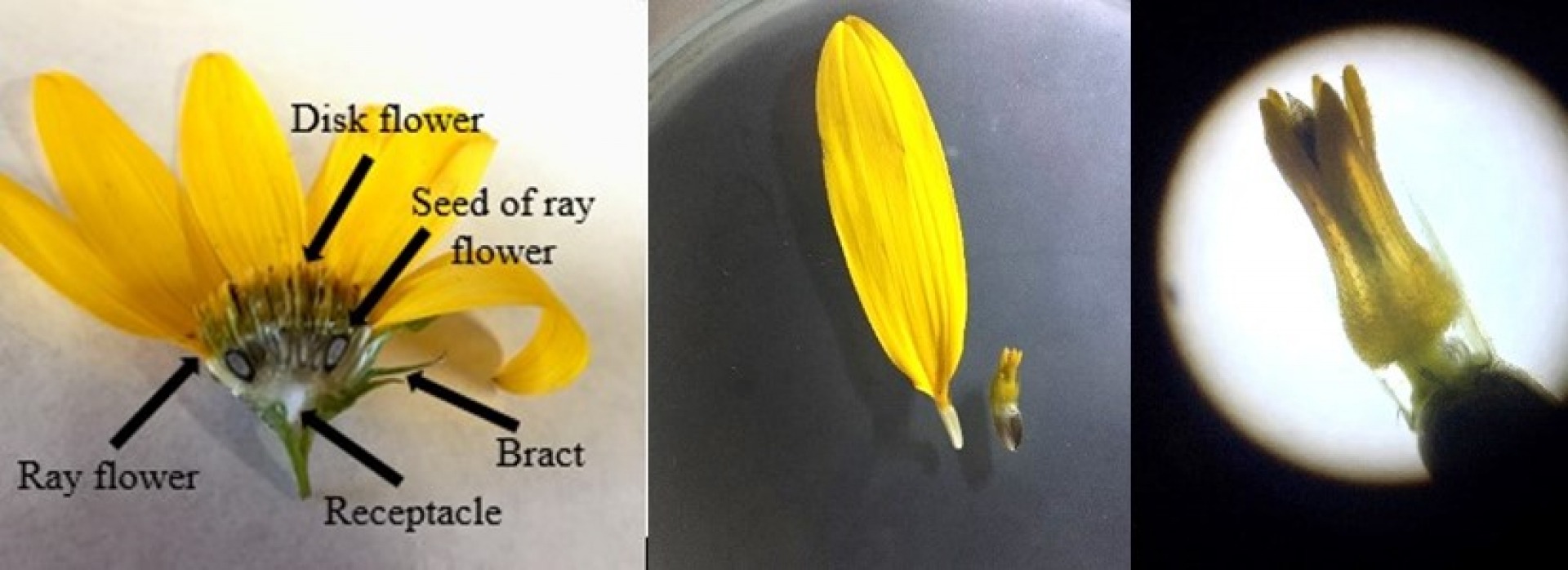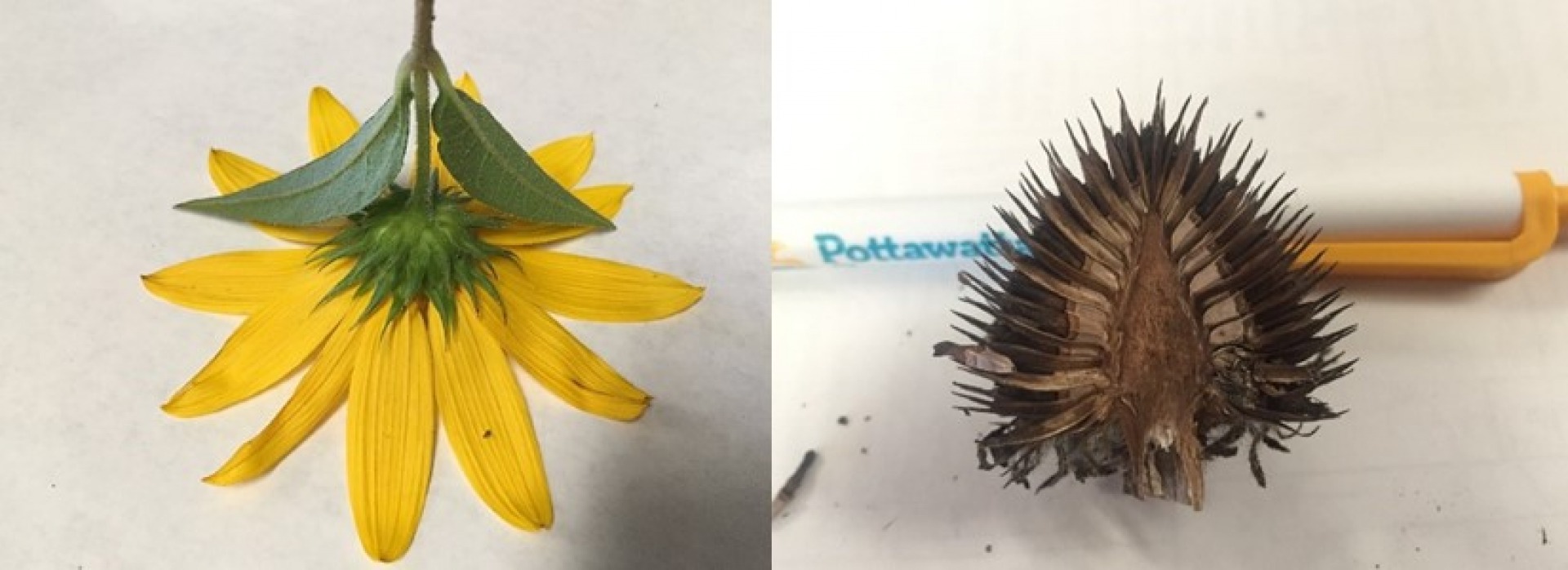These popular topics are heating up. Explore today's most viewed pages.
Late summer brings variable temperatures, cicada calls, and brightly colored roadsides spotted with wildflowers. A large number of those brightly colored wildflowers may very well be in the Asteraceae family, also known as the aster or sunflower family. Asteraceae is the largest flowering plant family, with about 24,000 identified species that can be found on every continent other than Antarctica. This family includes a large variety of species which includes annuals, perennials, vines, shrubs, and trees. The most recognizable flowers in this family are the true sunflowers (Helianthus). However, many plants such as goldenrod (Solidago), blazing star (Liatris), and coneflowers (Echinacea & Rudbeckia) are a part of this family as well.

The Asteraceae family is unique because of their composite flowers. What looks like one single flower is actually many small flowers attached to a specialized part of the stalk called the receptacle. Each of the large petals are individual flowers called ray flowers, also known as ray florets. Ray flowers have petals that are fused together and hang to one side. In the middle of the flower are disk flowers, which can also be called disk florets. There can be hundreds of disk flowers attached to one receptacle. The disk flower typically have five fused petals and because the Asteraceae family is so diverse, species in this family can have either disk, ray, or both types of flowers present. For example, true sunflowers (Helianthus) contain both types of flowers while ironweed (Vernonia) and blazing-star (Liatris) contain only the small disk flowers.


Another distinguishing characteristic of the Asteraceae family is that each flower produces only one seed. These dry, indehiscent (do not split open) pods with one seed are called achenes, and because they don’t split open, they rely on decomposition and animals to release the seeds over time. Some flowers on Asteraceae plants are sterile, meaning they do not have the reproductive parts to produce seeds. One example of this can be seen in members of the true sunflowers (Helianthus). These sunflowers have sterile ray flowers, so only the disk flowers produce seeds.
Many Asteraceae also have bracts which are modified leaves underneath the flower and above the regular leaves. They look similar to the layers of artichokes. Bracts can be smaller or larger than the flower and can be any color. Bracts help protect and give shape to the flower or attract pollinators if brightly colored.


The Asteraceae family provides many ecosystem services with its vast diversity. Many insects and birds rely on Asteraceaes as a food source. As previously mentioned, many Asteraceaes attract pollinators and provide nectar for them. The plants also provide leaves and seeds to feed wildlife. Not only do wildlife rely on members of the Asteraceae family for food, but humans do as well. We get cooking oils, sweetening agents, herbal tea, and vegetables like lettuce and artichokes from Asteraceae plants. Asteraceaes also help with erosion control by holding soil with their roots and growing in disturbed areas that many other plants would find too harsh to grow in. This provides the necessary ground cover to keep banks and other areas stable. There is no limit to what Asteraceaes can do with their vast diversity and number of species.
